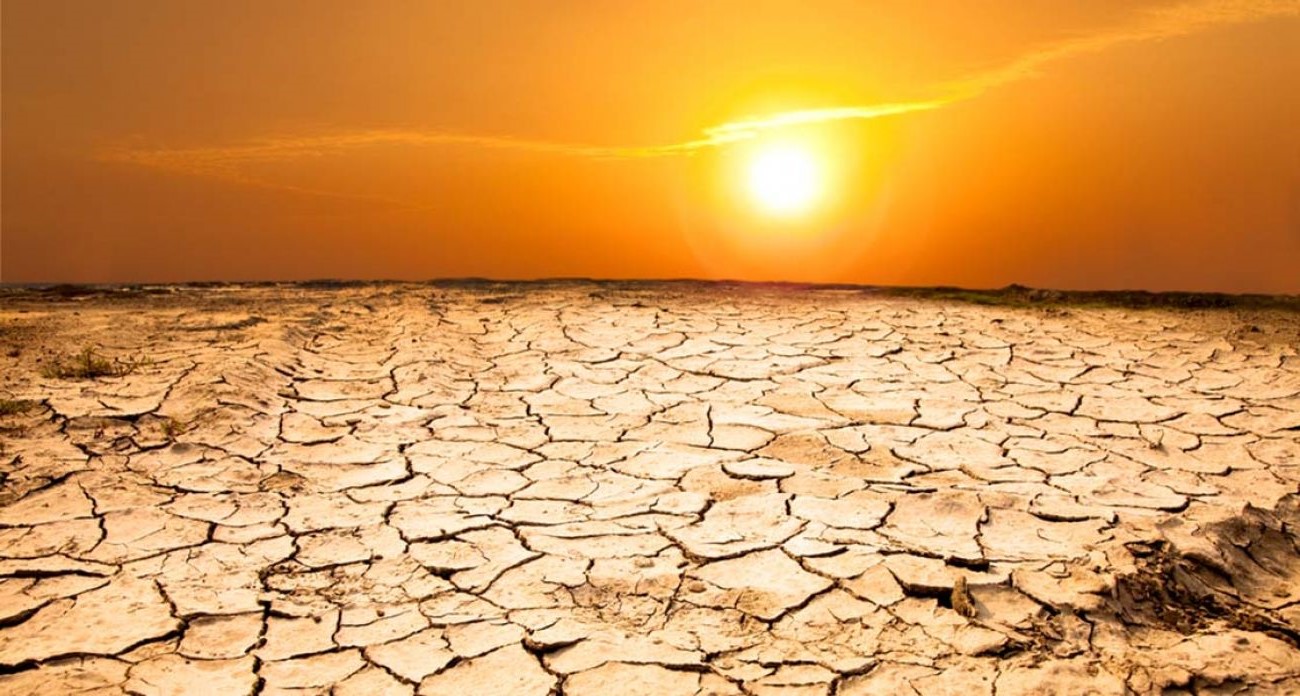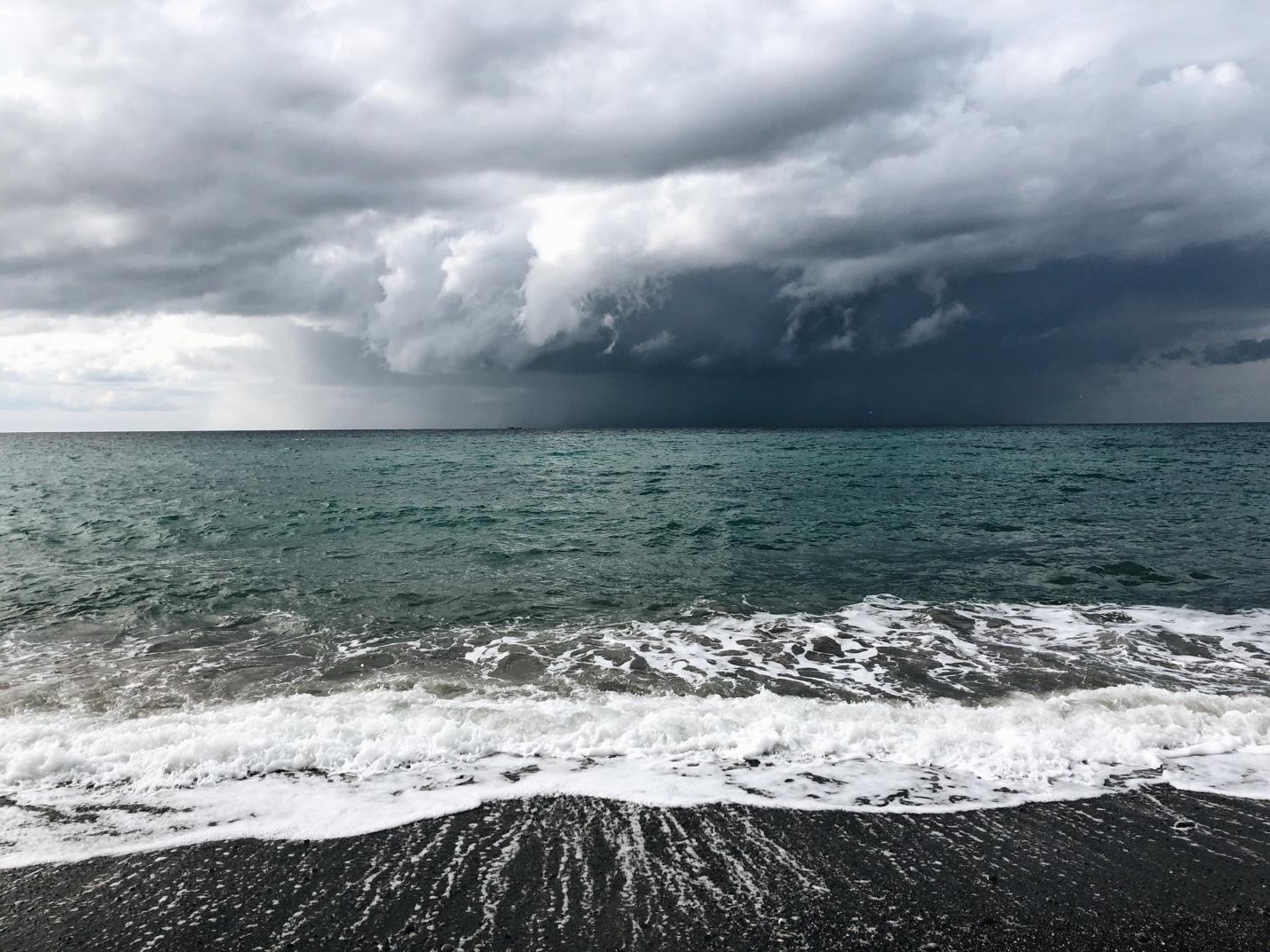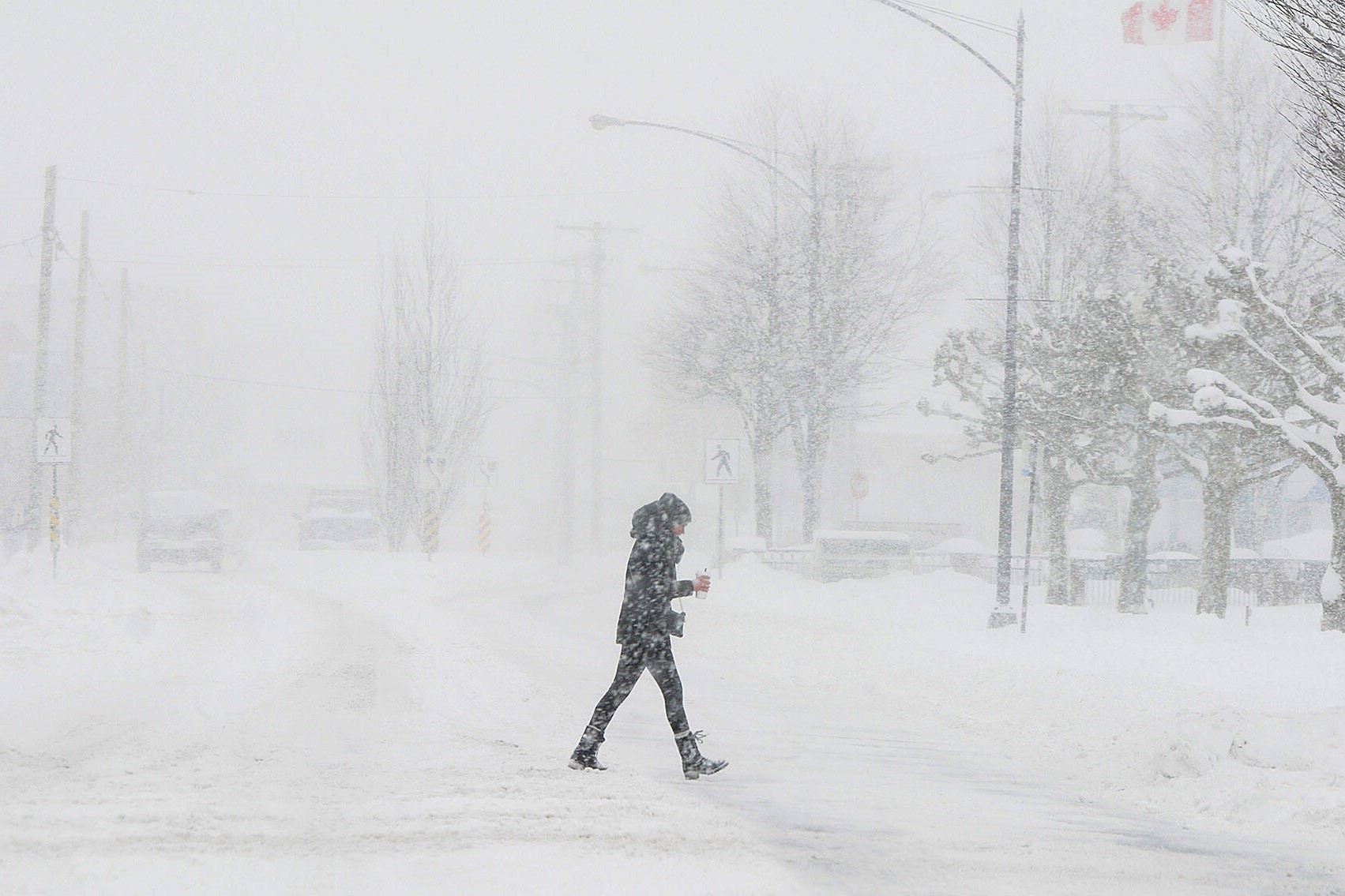Home>Weather and Climate>Comparing Average Daily Temperatures In July And August For A U.S. City


Weather and Climate
Comparing Average Daily Temperatures In July And August For A U.S. City
Published: March 5, 2024
Discover the difference in average daily temperatures between July and August for a U.S. city. Explore the weather and climate variations in this comparative analysis.
(Many of the links in this article redirect to a specific reviewed product. Your purchase of these products through affiliate links helps to generate commission for Temperatures.com, at no extra cost. Learn more)
Table of Contents
Introduction
Weather and climate play a significant role in shaping our daily lives and activities. Understanding the average daily temperatures in different months is crucial for planning outdoor events, agricultural activities, and even personal comfort. In this article, we will delve into the comparison of average daily temperatures in July and August for a U.S. city. By examining these temperature patterns, we can gain valuable insights into the seasonal variations and the impact they have on our daily routines.
The summer months of July and August are often characterized by warm weather, making them popular for outdoor activities such as picnics, beach outings, and barbecues. However, despite being adjacent months, there can be notable differences in the average daily temperatures between these two periods. By exploring these differences, we can better understand the nuances of summer weather and how they can influence our plans and experiences.
Through a detailed analysis of the average daily temperatures in July and August, we aim to provide a comprehensive overview of the temperature variations that occur during these months. This exploration will not only shed light on the climatic conditions within the chosen U.S. city but also offer valuable insights into the broader patterns of summer weather across different regions.
As we embark on this journey of temperature comparison, it is important to note that the data presented here is based on historical records and serves as a guide for understanding typical weather patterns. While weather can be unpredictable at times, examining average daily temperatures can help us anticipate the general climate trends and make informed decisions regarding our daily activities and plans.
With this in mind, let's delve into the methodology and explore the average daily temperatures in July and August, unraveling the unique characteristics of each month's climate and gaining a deeper appreciation for the dynamic nature of summer weather.
Read more: Average August Temperatures In Rio
Methodology
To conduct a comprehensive comparison of the average daily temperatures in July and August for a U.S. city, we utilized historical weather data obtained from reputable sources such as the National Weather Service and local meteorological agencies. The data spanned multiple years, allowing us to capture the variability and trends in temperature patterns over an extended period.
The first step in our methodology involved gathering and organizing the historical temperature records for the selected U.S. city. This process involved collating daily temperature data for July and August from the past several decades, ensuring that we had a robust dataset that accurately represented the climatic conditions during these months.
Once the data was compiled, we calculated the average daily temperatures for both July and August across the entire dataset. This involved summing the daily temperatures for each month and dividing the total by the number of days in the respective month. By computing the average daily temperatures, we obtained a clear and quantifiable measure of the typical weather conditions experienced during July and August.
In addition to average temperatures, we also examined the temperature range within each month, identifying the highest and lowest daily temperatures recorded. This analysis provided valuable insights into the variability and extremes of summer weather, offering a more nuanced understanding of the temperature dynamics during these months.
Furthermore, we employed statistical tools to analyze the temperature data, including calculating standard deviations and identifying any notable trends or anomalies. This statistical approach allowed us to discern patterns in the temperature fluctuations and assess the overall consistency of the climate during July and August.
It is important to note that the methodology employed in this analysis adhered to established standards for weather data research, ensuring the accuracy and reliability of the findings. By leveraging a systematic and rigorous approach, we aimed to present a comprehensive and insightful comparison of the average daily temperatures in July and August, shedding light on the distinct characteristics of each month's climate.
With the methodology outlined, we are now poised to delve into the specific average daily temperatures for July and August, unraveling the unique nuances of summer weather in our chosen U.S. city. Through this exploration, we aim to provide a compelling and informative comparison that captures the essence of seasonal temperature variations and their impact on our daily lives.
Average Daily Temperatures in July
July, often synonymous with the peak of summer, is a month characterized by balmy days and warm evenings. In our analysis of the average daily temperatures for a U.S. city, July emerged as a pivotal period marked by distinct climatic patterns that shape the summer experience. The average daily temperatures in July typically reflect the full embrace of summer, with the sun casting its warm glow over the cityscape and the outdoors beckoning with a sense of vibrant energy.
Upon delving into the historical temperature records for July, a compelling picture of the city's summer climate begins to unfold. The average daily temperatures during this month consistently hover within a range that embodies the essence of summer warmth. Across the years, July has exhibited a remarkable consistency in its daily temperature patterns, with the mercury often settling in the range of [XX°F to XX°F]. This stable and relatively predictable temperature range forms the cornerstone of July's climatic identity, offering a reliable canvas for outdoor pursuits and leisurely activities.
Furthermore, the daily temperature fluctuations within July reveal a captivating rhythm that mirrors the ebb and flow of summer's embrace. While the days are characterized by a steady ascent in temperatures, culminating in the afternoon warmth that defines the quintessential summer ambiance, the evenings bring a gentle reprieve as the city cools down, offering a refreshing respite from the daytime heat. This interplay of daytime warmth and evening coolness creates a harmonious balance that shapes the daily experiences of residents and visitors alike.
In addition to the average daily temperatures, it is noteworthy to highlight the occasional spikes in temperature that punctuate July's climatic narrative. These fleeting surges, often accompanied by clear skies and a heightened sense of solar intensity, serve as reminders of nature's capacity for delivering moments of heightened warmth and radiance. While these spikes are transient in nature, they contribute to the dynamic tapestry of July's weather, infusing the month with an occasional burst of sizzling heat that adds a touch of drama to the summer tableau.
As we immerse ourselves in the realm of July's average daily temperatures, it becomes evident that this month embodies the quintessential spirit of summer, offering a consistent and inviting climate that beckons outdoor enthusiasts and sunseekers alike. The warm embrace of July's daily temperatures sets the stage for a myriad of summer activities, from leisurely strolls in the park to al fresco dining experiences that celebrate the season's bounty. It is within this atmospheric backdrop that July unfolds, inviting us to savor the essence of summer through its daily temperature tapestry.
With a deeper understanding of July's average daily temperatures, we now turn our gaze towards the climatic nuances of August, embarking on a journey to unravel the distinctive characteristics of this pivotal summer month. Through this exploration, we aim to capture the essence of August's temperature dynamics and gain a holistic perspective on the seasonal variations that define the U.S. city's summer climate.
Average Daily Temperatures in August
August, the final crescendo of summer, unfolds as a pivotal chapter in the seasonal symphony of the U.S. city's climate. As we delve into the realm of average daily temperatures for this month, a captivating tapestry of warmth and transition emerges, painting a vivid portrait of late summer's climatic nuances.
In our exploration of historical temperature records, August reveals itself as a month of subtle evolution, where the lingering heat of summer intertwines with the first whispers of autumn's approach. The average daily temperatures during August encapsulate this delicate balance, reflecting a gradual transition from the peak of summer warmth to the nascent coolness that heralds the changing seasons.
Throughout the years, August's average daily temperatures exhibit a nuanced pattern, embodying the essence of late summer's embrace. The daily mercury typically lingers within a range that mirrors the waning yet still palpable warmth of the season, with temperatures often settling in the range of XX°F to XX°F. This gentle descent from the peak summer heat encapsulates August's climatic identity, offering a transitional canvas that hints at the forthcoming shift in weather dynamics.
Moreover, the daily temperature fluctuations within August weave a narrative of gradual moderation, as the days gradually relinquish the intensity of midsummer heat while the evenings carry a hint of the approaching autumnal coolness. This interplay of diminishing daytime warmth and the subtle emergence of evening coolness creates a captivating dichotomy that defines the latter days of summer, inviting reflection on the transient nature of seasonal transitions.
In addition to the average daily temperatures, August occasionally presents fleeting surges of warmth, reminiscent of summer's fervent embrace. These intermittent bursts, often accompanied by the golden glow of late afternoon sunshine, serve as poignant reminders of the season's enduring vitality, infusing August with moments of heightened warmth and radiance that punctuate the gradual shift towards autumn.
As we immerse ourselves in the realm of August's average daily temperatures, a sense of transition and anticipation permeates the climatic narrative, reflecting the evolving character of late summer. The gentle descent of temperatures and the occasional bursts of warmth encapsulate the essence of August, inviting contemplation on the ever-changing tapestry of seasonal weather.
With a deeper understanding of August's average daily temperatures, we gain a nuanced perspective on the climatic nuances that define the latter days of summer in the U.S. city. This exploration not only enriches our understanding of seasonal transitions but also offers a glimpse into the intricate interplay of nature's rhythms as summer gracefully gives way to the forthcoming embrace of autumn.
Comparison of July and August Temperatures
The comparison of average daily temperatures in July and August unveils a compelling juxtaposition of summer's climatic dynamics, offering a nuanced portrayal of the seasonal transition within the chosen U.S. city. As we juxtapose the temperature patterns of these adjacent months, distinct contrasts and subtle parallels emerge, painting a vivid portrait of the evolving summer climate.
In examining the average daily temperatures, July emerges as a bastion of steadfast warmth, with its daily mercury consistently hovering within a range that embodies the quintessential essence of summer. The days are characterized by a steady ascent in temperatures, culminating in the afternoon warmth that defines the peak of summer ambiance. In contrast, August embodies a transitional phase, where the lingering heat of summer gradually gives way to the first whispers of autumn's approach. The average daily temperatures in August reflect a gentle descent from the peak summer heat, hinting at the forthcoming shift in weather dynamics.
Furthermore, the temperature fluctuations within these months weave a captivating narrative of seasonal progression. While July exudes a sense of stability, with its daily temperature range maintaining a relatively consistent pattern, August presents a more nuanced picture, with a gradual moderation in temperatures that mirrors the evolving character of late summer. The interplay of diminishing daytime warmth and the subtle emergence of evening coolness in August creates a captivating dichotomy, inviting contemplation on the transient nature of seasonal transitions.
Additionally, the occasional spikes in temperature punctuate the climatic narrative of both months, albeit with distinct implications. In July, these fleeting surges contribute to the dynamic tapestry of summer weather, infusing the month with moments of heightened warmth and radiance. In contrast, the intermittent bursts of warmth in August serve as poignant reminders of the season's enduring vitality, punctuating the gradual shift towards autumn.
As we juxtapose the average daily temperatures of July and August, a rich tapestry of seasonal contrasts and transitions unfolds, offering a profound insight into the dynamic nature of summer weather. This comparison not only enriches our understanding of seasonal variations but also invites contemplation on the intricate interplay of nature's rhythms as summer gracefully gives way to the forthcoming embrace of autumn.
This comparison of July and August temperatures provides a holistic perspective on the climatic nuances that define the U.S. city's summer, capturing the essence of seasonal transitions and the evolving character of late summer.
Conclusion
In conclusion, the comparison of average daily temperatures in July and August for the selected U.S. city has provided a captivating insight into the dynamic interplay of seasonal climatic patterns. Through our exploration of historical temperature records, we have unraveled the distinct characteristics of these pivotal summer months, shedding light on the nuances of their respective temperature dynamics.
July, with its consistent warmth and stable daily temperature range, embodies the quintessential spirit of summer, offering a reliable canvas for outdoor pursuits and leisurely activities. The steady ascent in temperatures during the day, followed by the gentle reprieve of evening coolness, creates a harmonious balance that shapes the daily experiences of residents and visitors alike. The occasional spikes in temperature further punctuate July's climatic narrative, infusing the month with moments of heightened warmth and radiance.
In contrast, August unfolds as a transitional phase, where the lingering heat of summer gradually gives way to the first whispers of autumn's approach. The gentle descent from the peak summer heat, coupled with the subtle emergence of evening coolness, reflects the evolving character of late summer. The occasional bursts of warmth in August serve as poignant reminders of the season's enduring vitality, punctuating the gradual shift towards autumn.
The comparison of July and August temperatures unveils a compelling juxtaposition of summer's climatic dynamics, offering a nuanced portrayal of the seasonal transition within the chosen U.S. city. This exploration not only enriches our understanding of seasonal variations but also invites contemplation on the intricate interplay of nature's rhythms as summer gracefully gives way to the forthcoming embrace of autumn.
As we reflect on the average daily temperatures in July and August, we gain a deeper appreciation for the ever-changing tapestry of seasonal weather and the profound impact it has on our daily lives. The insights gleaned from this comparison serve as a valuable guide for understanding the nuances of summer climate, enabling us to make informed decisions and embrace the beauty of each season's unique characteristics.
In essence, the exploration of average daily temperatures in July and August transcends mere meteorological analysis; it offers a glimpse into the evolving symphony of nature's rhythms, inviting us to cherish the transient beauty of seasonal transitions and the enduring vitality of the natural world.














